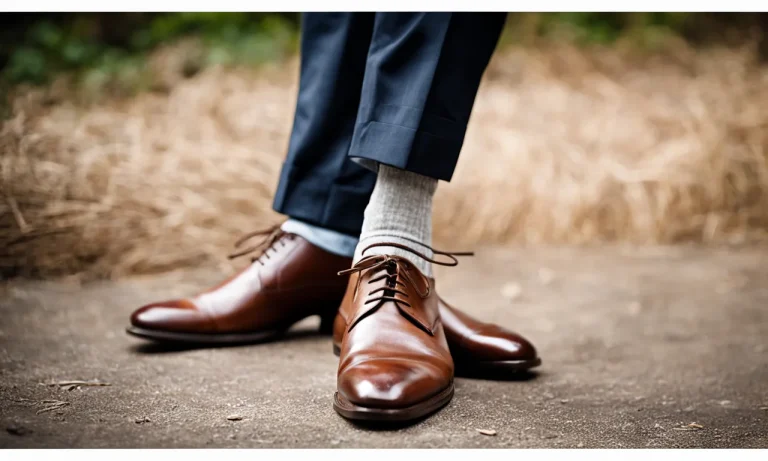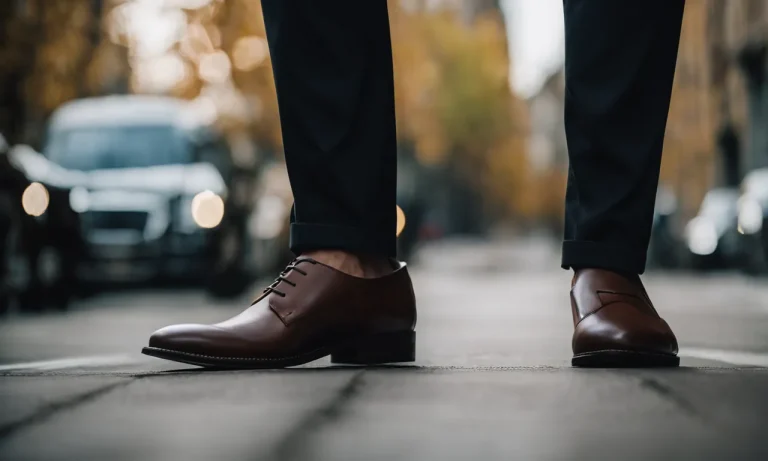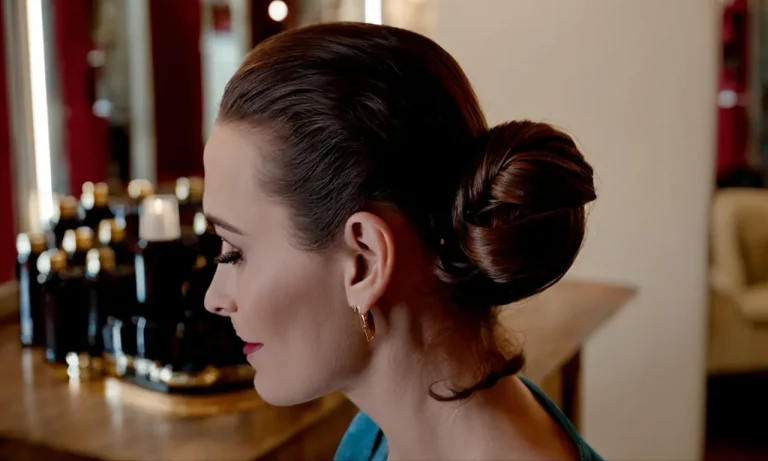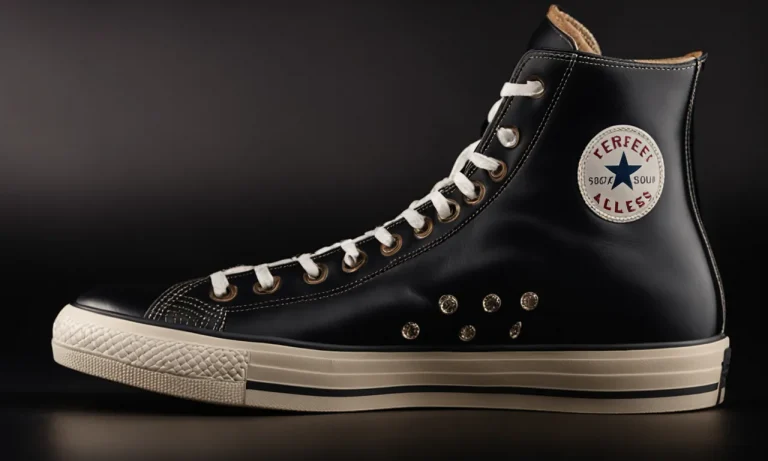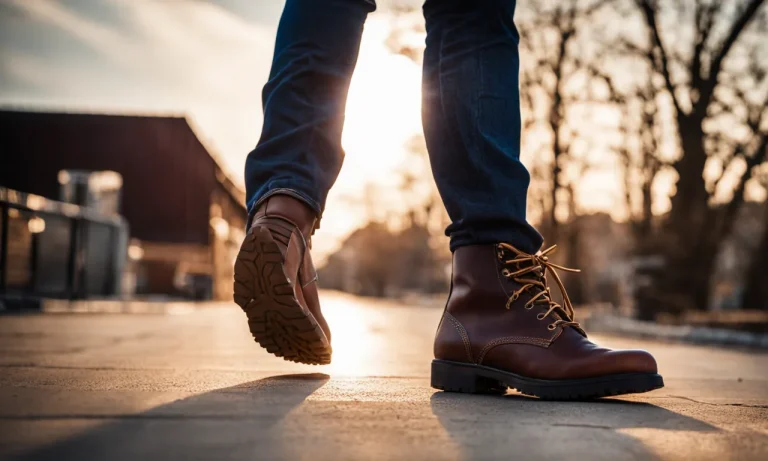Cowboy boots and spurs go together like peanut butter and jelly. If you’ve ever wondered what those metal spikes are for on cowboy boots, you’ve come to the right place!
Here’s a quick answer: Spurs on cowboy boots are metal attachments worn by cowboys to guide horses with very light pressure during ranch work and riding. Read on to learn all about the history, purpose, styles, and proper use of cowboy boot spurs.
The History and Purpose of Spurs on Cowboy Boots
Spurs have long been an iconic symbol of the American cowboy. These metal devices, attached to the heels of cowboy boots, serve both practical and aesthetic purposes. Understanding their history and purpose can provide valuable insight into the culture and traditions of the American West.
Origins and Early History of Spurs
The use of spurs can be traced back to ancient civilizations such as the Romans and the Greeks. However, it was during the Middle Ages that the design of spurs began to resemble what we recognize today. In Europe, knights wore spurs as a sign of their status and authority.
In the context of cowboy culture, the origins of spurs can be linked to the Spanish conquistadors who brought their equestrian traditions to the Americas. As Spanish settlers and vaqueros (Mexican cowboys) migrated northward, they brought with them their distinctive style of horsemanship, which included the use of spurs.
Over time, this tradition became ingrained in the cowboy culture of the American West.
Why Cowboys Wore Spurs on Their Boots
Cowboys wore spurs on their boots for several reasons. Firstly, spurs provided a means of communication between the rider and the horse. By using subtle movements of their feet, cowboys could convey commands to their horses, such as speeding up, slowing down, or changing direction.
This was particularly important when herding cattle or engaging in activities that required precise control of the horse’s movements.
Secondly, spurs also served as a tool for self-defense. In the vast open spaces of the American West, encounters with wild animals or hostile individuals were not uncommon. Cowboys could use the sharp rowels on their spurs to defend themselves if necessary.
Lastly, the wearing of spurs became a symbol of authority and expertise in horsemanship. A cowboy’s skill and experience were often judged by the sound and rhythm of their spurs. The jingle of the spurs became synonymous with the image of a capable and confident cowboy.
Today, the use of spurs on cowboy boots has evolved beyond its practical purposes. They have become a fashion statement and a symbol of cowboy culture. Whether you’re a seasoned rider or simply a fan of Western aesthetics, understanding the history and purpose of spurs on cowboy boots adds depth and appreciation to this timeless tradition.
Spur Styles for Cowboy Boots
Spurs are an essential accessory for any cowboy or cowgirl, adding both a functional and stylish touch to their boots. There are several different styles of spurs available, each with its own unique features and benefits.
Whether you’re a seasoned rider or just starting out, it’s important to choose the right spur style for your needs. In this guide, we’ll explore four popular spur styles: Traditional Sharp Rowel Spurs, Blunt Rowel Spurs, Rollerball Spurs, and Wheel Spurs.
Traditional Sharp Rowel Spurs
Traditional Sharp Rowel Spurs are the most common style of spurs seen on cowboy boots. They feature a circular rowel with sharp points that can be rotated. These spurs are designed to provide a subtle cue to the horse, allowing for precise and controlled movements.
The sharp rowels are ideal for experienced riders who have mastered their leg cues and need a more responsive spur. They are commonly used in Western riding disciplines such as reining and cutting.
Blunt Rowel Spurs
If you’re looking for a more gentle option, Blunt Rowel Spurs may be the right choice for you. These spurs have a rowel with rounded or blunt points, providing a milder cue to the horse. Blunt Rowel Spurs are often preferred by riders who are still developing their leg cues or working with sensitive horses.
They offer a softer touch while still providing the necessary communication between rider and horse.
Rollerball Spurs
Rollerball Spurs are a popular choice among riders who value a smooth and quiet movement. These spurs feature a rowel with small rollerballs on the points, allowing for a more fluid motion. The rollerballs reduce friction and provide a gentle and consistent cue to the horse.
Rollerball Spurs are often used in disciplines such as dressage and pleasure riding where precise and subtle leg aids are required.
Wheel Spurs
For riders looking for a unique and eye-catching spur style, Wheel Spurs are the way to go. These spurs have a rowel shaped like a wheel, with multiple blunt points arranged in a circular pattern. They add a touch of flair to cowboy boots and are often used in show ring events.
While they may not provide as precise a cue as other spur styles, Wheel Spurs are a great choice for riders who want to make a statement and stand out in the crowd.
When choosing a spur style, it’s important to consider your riding experience, the type of horse you’re working with, and the discipline you’re involved in. Each spur style offers its own advantages and considerations, so take the time to find the one that best suits your needs.
Remember, a well-chosen spur can enhance your riding experience and help you communicate effectively with your horse.
How to Properly Use Spurs When Riding
Using Spurs Ethically and Humanely
When it comes to using spurs while riding, it is crucial to prioritize the ethical and humane treatment of the horse. Spurs should never be used to cause pain or discomfort to the animal. Instead, they should be seen as a tool for communication and refinement of aids.
It is important for riders to understand that the purpose of spurs is to provide subtle cues, not to forcefully control or punish the horse.
One of the key aspects of using spurs ethically is to ensure that the rider has developed a solid foundation of riding skills and has a good understanding of how to use their seat, legs, and hands effectively.
This allows for clear communication with the horse and reduces the reliance on spurs as a means of control.
It is also important for riders to be aware of the sensitivity and responsiveness of their horse. Each horse is unique, and some may require more or less pressure from spurs. It is essential to observe and understand the horse’s reactions and adjust the use of spurs accordingly.
Building a strong partnership and trust with the horse is the key to using spurs ethically and humanely.
Placing Spurs Correctly on Boots
Properly placing spurs on boots is essential to ensure effective and safe use. Spurs should be positioned towards the back of the boot, just below the rider’s ankle bone. This placement allows for better control and precision when applying cues with the spurs.
Riders should also ensure that the spurs are securely attached to the boots. Loose spurs can be dangerous and may result in accidental cues or injuries to both the rider and the horse. Regularly check the tightness of the spur straps and make any necessary adjustments to maintain a secure fit.
It is recommended to choose spurs with blunt or rounded edges rather than sharp ones. This helps to minimize the risk of causing unnecessary discomfort or injury to the horse. Additionally, riders should periodically check their spurs for any signs of wear and tear, and replace them when necessary to maintain their effectiveness.
Riding Cues to Give with Spurs
When using spurs as a riding aid, it is important to understand the appropriate cues to give to the horse. Spurs are typically used to refine and reinforce leg aids, providing more precise and subtle cues.
They can be used to ask the horse to move forward, sideways, or to perform more advanced movements.
It is crucial to start with light pressure when using spurs and gradually increase it if necessary. Riders should be aware of the horse’s response and adjust their cues accordingly. It is important to emphasize that spurs should never be used to force or punish the horse.
Instead, they should be used in conjunction with other aids to create a harmonious and balanced communication with the horse.
Remember, the goal of using spurs is to enhance the rider’s communication and partnership with the horse. By using spurs ethically, placing them correctly on boots, and giving appropriate cues, riders can effectively utilize this tool while ensuring the well-being and comfort of their equine partners.
Popular Spur Accessories and Options
When it comes to cowboy boots, spurs are not only functional but also add a touch of style. There are several popular spur accessories and options available that can enhance the look and functionality of your spurs. Let’s take a closer look at some of the most popular ones:
Spur Straps
Spur straps are an essential accessory for securing spurs to your boots. They are typically made of leather and come in various styles and colors to match your personal taste. Whether you prefer a classic, simple design or a more intricate and decorative one, there is a wide range of options to choose from.
Some spur straps even feature embellishments like silver conchos or tooling patterns, adding an extra flair to your boots.
Interchangeable Rowels
One exciting option for spurs is the ability to swap out rowels. Rowels are the rotating wheels found at the ends of spurs that provide the necessary spur action. Interchangeable rowels allow you to customize your spurs based on your riding needs.
You can choose rowels with different sizes or patterns, depending on the level of responsiveness and comfort you desire. This versatility makes interchangeable rowels a popular choice among riders who like to fine-tune their riding experience.
Engraved Designs
If you want to add a touch of personalization and artistry to your spurs, engraved designs are an excellent option. Engraving can be done on the shank or the band of the spur, creating intricate patterns or even personalized messages.
Some riders opt for traditional Western motifs like horseshoes or cowboy hats, while others go for more unique designs. Engraved spurs can be a great way to showcase individuality and make a statement while riding.
When exploring these popular spur accessories and options, it’s important to consider both style and functionality. Remember, spurs are not just an accessory but a tool used for communication with your horse.
So, choose accessories that not only look great but also complement your riding style and needs. It’s always a good idea to consult with experienced riders or professionals to ensure you make the best choice for your spurs.
Conclusion
Spurs have been an integral part of traditional cowboy boots and Western riding culture for centuries. While controversial to some, they serve an important purpose when used humanely and correctly. With an amazing range of styles to choose from, you can find the perfect set of spurs to adorn your cowboy boots.
So next time you see a cowboy sporting those metal spikes, you’ll know they’re not just a fashion statement—they’re a practical tool of the trade! Hopefully this guide gave you a comprehensive overview of the history, purpose, styles and use of spurs on cowboy boots.

